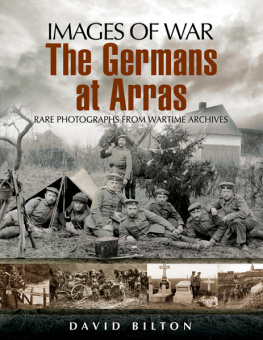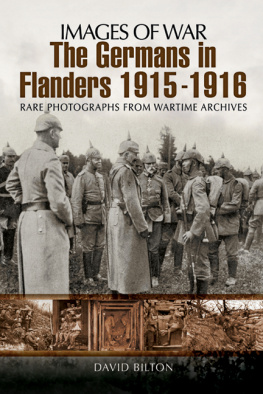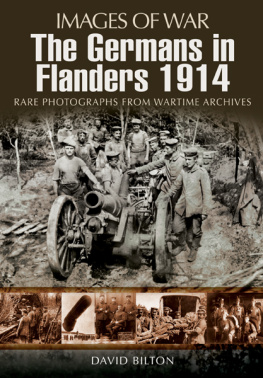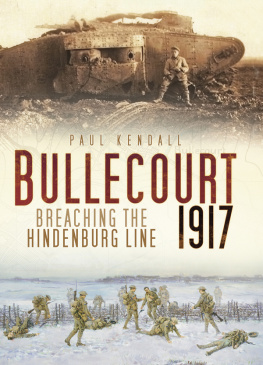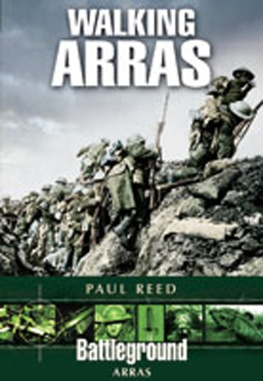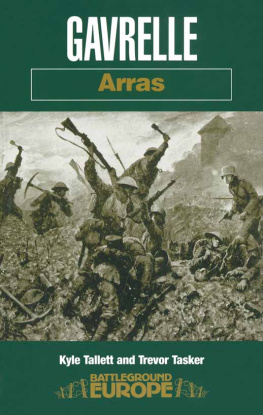
First published in Great Britain in 2008 by
P E N & S W O R D M I L I T A R Y
an imprint of
Pen & Sword Books Ltd,
47 Church Street, Barnsley,
South Yorkshire.
S70 2AS
Copyright David Bilton, 2008
PRINT ISBN 978-1-84415-768-6
PDF ISBN: 9781783038862
EPUB ISBN: 9781783038886
PRC ISBN: 9781783038879
The right of David Bilton to be identified as Author of this Work
has been asserted by him in accordance with the
Copyright, Designs and Patents Act 1988.
A CIP catalogue record for this book is available
from the British Library
All rights reserved. No part of this book may be reproduced or transmitted
in any form or by any means, electronic or mechanical including photocopying,
recording or by any information storage and retrieval system,
without permission from the Publisher in writing.
Printed and bound in Great Britain by CPI UK
Pen & Sword Books Ltd incorporates the imprints of
Pen & Sword Aviation, Pen & Sword Maritime,
Pen & Sword Military, Pen & Sword Select, Pen & Sword Military Classics,
Leo Cooper, Wharncliffe Local History
For a complete list of Pen & Sword titles please contact:
PEN & SWORD BOOKS LIMITED
47 Church Street, Barnsley, South Yorkshire, S70 2AS, England.
E-mail:
Website: www.pen-and-sword.co.uk
Acknowledgements
A big thanks to my family for putting up with me writing yet another book Dont you have enough to do? was the household cry sorry! And again, what would I do without Anne Coulson to read the proof or the wonderful staff at the Prince Consorts Library who, so ably, assist me in my research? Thank you. As always it was a pleasure to work with the wonderful team at Pen and Sword.
Any errors of omission or commission are mine alone.
Introduction
It is not the purpose of this book to analyse in any detail the strategic, tactical, political or economic reasons for the fighting around Arras; it is merely to chronicle the events of 19141918 briefly in words, relying on the pictures to tell most of the story. It is not a chronological photographic record, more an attempt to provide a snapshot of the experiences of the German Army on the Arras Front during the four year period from October 1914 to October 1918. As the causes of the war have been dealt with at length in many books, I have only tried to set the scene for this book through the use of proclamations and statements from the Reich about the situation.
As with The German Army on the Western Front 1917-1918 the day-to-day chronology to show what was happening around Arras is taken from the German point of view. Although the area was strategically important, not every day is listed; for, as in every other area on the front, most days were no more significant than the last. If any day is missing, it is simply a case of: In the West nothing new.
The area around the Arras front, from Lens in the north to Bapaume in the south, was an area of strategic importance to the Entente on account of the railroad centre at Arras, and on the German side the area was economically important because of its coal and agricultural output. It was also a relatively easily defended area as the French and, later, the British positions were on the lower ground. The German Army initially missed its chance here, and despite later efforts never succeeded in rectifying the mistake. In this book, the Arras Front covers the area from south of Lens to just below Bullecourt.
Fighting in the area can be divided neatly into five distinct phases. The first battle of Arras was fought during September and October 1914 when German troops occupied the town only to lose it to French counterattacks. Although German attacks were generally held, the French did eventually lose the strategic location of Vimy Ridge. The second battle of Arras comprised the French counter-attacks of 1915 the Battle of Artois, fought between June and July designed to relieve pressure on the city. The fighting was severe and by 23 June the majority of the German trenches and dugouts before Arras had been captured. Early in July the French cleared the communications between Arras and Bthune and captured the nearby towns of Souchez and Neuville-St. Vaast. The third battle started when the British took over the Arras sector in March, but did not become an official battle until April 1917. After considerable mining activity, a decisive battle was fought between April and May of that year which resulted in the capture of Vimy Ridge and other important positions around Arras (for this battle I have used much material from The German Army on the Western Front 1917-1918). The fourth battle of Arras, during the German offensive of 1918, was short-lived and achieved little for the attackers. The fifth and final battle was fought during August and September 1918 when Allied forces attacked German positions to the east of Arras.
In each phase the fighting was hard and the casualties high; indeed those of 1917 rank among the highest of the war on the Western Front. It was not until the last battles though that the battle-front actually moved very far.
The town of Arras, like Ypres, was always just on the front line and earned the name of La ville martyre with many of its public buildings destroyed by artillery and aerial attack. Below the city are the Boves, underground chambers that were used to shelter Allied soldiers and, after the war, to temporarily house civilians returning to rebuild their shattered town. During the war further tunnels were dug by British troops for the invisible movement of troops to the front line.
Throughout the book, German units are identified by italics and British and French troops by standard lettering.

A tree in the park at Boisleux-aumont, south of Arras, showing the effect of blast from a shell explosion.

An artists view of the northern sector of the Arras front showing the Douai plain from the heights of Arras.
Chapter One
1914
In Vienna, the local paper, the Weiner Zeitung, reported that In the night of July 25, it was made known that the Emperor of Austria had ordered a partial mobilisation of the Army and a partial calling up of the Landsturm. Six days later, the Reichsanzeiger printed Imperial ordnance from Emperor Wilhelm, stating that the territory of the Empire, with the exception of the Kingdom of Bavaria, is hereby declared to be in the condition of war. This was followed on 1 August by the order to mobilise from the Emperor: I order the German Army and the Imperial Navy to be placed on a war footingAugust 2, 1914, is fixed as the first day of mobilisation. Five days later, as a result of Germany being involved in a war that was forced upon the country, the Emperor called upon all Germans capable of bearing arms to defend the Fatherland.
While Austria and Germany prepared and mobilised, so too did the armies of France, Russia, Belgium and Britain. On 2 August, the French accused the Germans of crossing the frontier at three different points, shooting at the border personnel, stealing horses and killing a soldier. The next day, the German Ambassador in France, in his farewell letter, accused the French of violating Belgian territory and dropping bombs on Germany, giving his reason for leaving as the state of war that now existed between France and Germany. The die was cast Europe would go to war.
Next page
